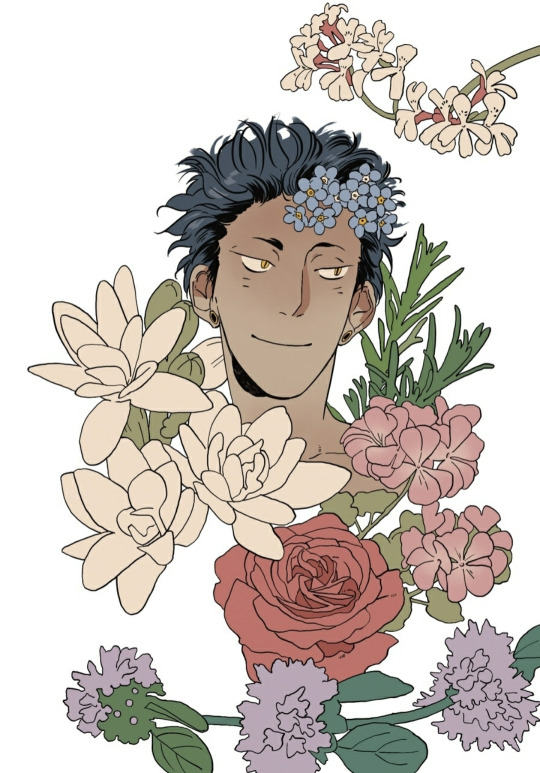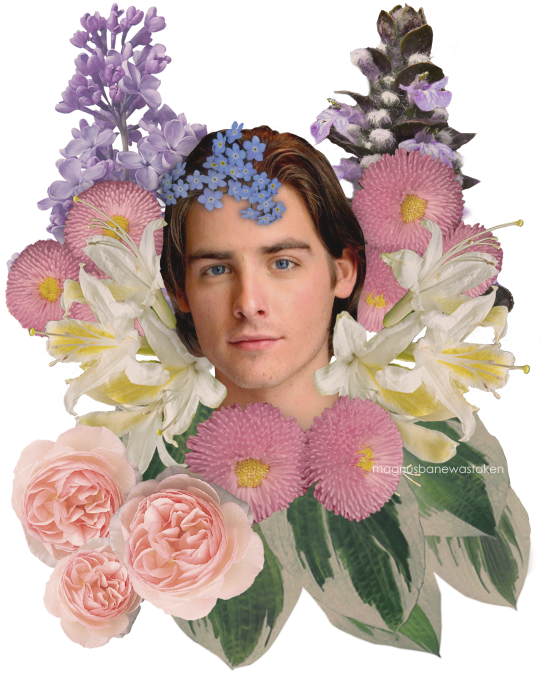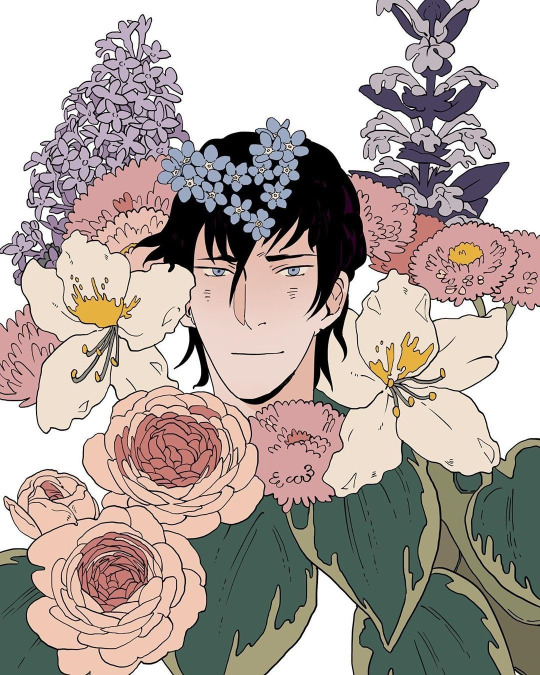#ALSO CLEANING UP FROM OTHER PHOTOS BECAUSE THERE WERE NO TRANSPARENT PNGS FOR MOST OF THEM
Photo




MALEC FLORIOGRAPHY | based on @cassandrajp’s illustrations
MAGNUS : Secret Tryst
Nutmeg Geranium - An Unexpected Meeting
Forget-Me-Not - True Love
Tuberose - Dangerous Love
Rosemary - Remembrance
Rose Geranium - Preference
Red Rose - Passion & Love
Pennyroyal - Flee
ALEC : Puppy Love
Lilac - First Emotions of Love
Forget-Me-Not - True Love
Bugle - Most Lovable
English Daisy - Innocence
White Azalea - First Love
Thornless Rose - Early Attachment
Hosta - Devotion
#malec#magnus bane#alec lightwood#floriography#godfrey gao#kevin zegers#tmi#the mortal instruments#tsc#the shadowhunter chronicles#IT WAS HARD TO FIND THE EXACT FLOWERS USED HERE#ALSO CLEANING UP FROM OTHER PHOTOS BECAUSE THERE WERE NO TRANSPARENT PNGS FOR MOST OF THEM#river makes crap
11 notes
·
View notes
Text
Here are the Best Ways to Use Twitch Emotes
Twitch emotes are a fantastic way to add a bit of flair to your Twitch stream and entice watchers to either follow or subscribe. And if playing video games for cash is one of your top passion fire priorities, you definitely need those sweet, sweet subscribers.
This ultimate guide to emotes on Twitch is going to give you a little background on the emotes (especially the most popular ones), and then dive into the differences between global and channel emotes, creating custom emotes, and using emotes without being an affiliate.
Here’s everything you ever wanted to know about Twitch Emotes.
What Are Twitch Emotes?
Twitch’s emotes are very similar to the emotes that you see on your phone and other social media sites.
They are fun little icons people use in the Twitch chat. They are used to cheer, laugh, cry, and convey a variety of other emotions and reactions. Twitch has mastered the use of emoticons in ways other websites can only dream of. Twitch built an entire culture with their emotes system.
Many emotes have turned into memes within the gaming community. Some have even made appearances outside of it as well.
Popular Twitch Emotes
Some of the most popular and widely known Twitch emotes are cut-outs of influential streamers and creators’ faces showing some type of reaction. Yes, cut-outs of faces can become emotes! The most widely known is Kappa. They made this emoticon from a greyscale photo of the creator of what came to be known as Twitter’s chat.
That was before Twitter was even a thing, way back in 2007, when the premier streaming platform was Justin.tv (which eventually morphed into Twitch).
The Kappa emoticon is now fully ingrained into Twitch culture. Generally, it signifies an eye roll or a sarcastic response. People also use it to spam chats.
The LUL emote is another trendy icon. It stands for “lame uncomfortable laugh” and depicts the late streamer, John Bain, laughing. There were some copyright/trademark issues with its use in the beginning. Still, the original photographer, Jonathan Tayag, authorized Twitch to use it under the stipulation that it be free for everyone. It’s now one of the most popular global emotes. Unfortunately, Bain passed away after a battle with cancer in 2018, at the age of 33.
The BibleThump emote is one of the most popular global emotes that is an illustration rather than a person’s face. It’s generally used to depict sadness, either to commiserate with the streamer or someone in chat or as a meme.
Popular memes, such as the “feels bad man” frog and the “concern doge,” have also found their way into popular Twitch emotes.
Global Emotes vs. Channel Emotes
There are two different types of emotes that you will see on Twitch – global emotes and channel emotes. Global emotes are available for everyone to use, whereas channel emotes are limited to channel subscribers. Channel emotes are what gives streamers who’ve reached affiliate or partner status a little bit of personalization and control over their stream chats.
How Do I get Twitch Emotes?
Every streamer and viewer has access to global Twitch emotes. All you have to do to use one of the global emotes is to click the little smiley face icon in the chatbox and choose your emoji – just like with other social media and texting apps.
The channel emotes are where Twitch truly stands out from all other social platforms (if you consider Twitch to be a social platform). You need to get started with streaming and achieve affiliate or partner status to have access to them, but it’s definitely worth the effort. Where else can you make and use custom emojis?
If you are watcher rather than a streamer, you get custom channel emotes when you subscribe to a channel. It’s up to the individual streamer to decide which emoji each tier the subscriber can access.
Making Custom Emotes
Some streamers do make their own custom emotes, but a ton of others hire a graphic artist. If you don’t have a lot of experience with a photo editor, it might be better to hire an artist, because some technical requirements need to be met for the emote to work with Twitch’s platform. But please, be sure to pay the artist fairly for their work. They are freelancers trying to make a living too!
Twitch also has restrictions and guidelines for what types of emotes you can usee used on their site. They want to keep the site friendly and open to everyone, and unfortunately, some would use the power of Twitch emotes to be abusive. Twitch is adamant about keeping their site clean and will reject or remove any emoticon that doesn’t meet their guidelines.
Fortunately, all of their technical guidelines and restrictions are pretty straight forward and probably what you would expect from a website trying to keep things clean, safe, and professional.
General Requirements for Emotes
When making custom emotes, make sure that they follow all of Twitch’s community rules. That means they can’t contain any of the following content:
Hateful –racial/sexist slurs, symbols, stereotypes
Harassment – Targeted insults, bullying, threatening
Threats of violence – Threats against others, threats of suicide
Obscene content – gratuitous depictions of violence, blood, gore, severe injury, death
Sexual content – sexual acts (sex, masturbation), arousal, gestures, aids, and attire
Nudity – depictions and imitations of nude torsos, buttocks, genitals, and anuses.
Illegal drugs – depictions or references to illegal drug use, drugs, and drug paraphernalia.
Vulgarity – obscene or explicit words, phrases, and gestures
Politics – political phrases, symbols, and figures
Animations – Unless you are a Twitch partner using their cheermote feature
Individual letters and characters – Unless you are a Twitch Partner and the letters or characters that you use are a key part of your brand
Twitch Brand Assets – images or content trademarked by Twitch
Emoticons based on Twitch Global Emoticons – copies of the emoticons already there
Copyright/trademark infringement – Other people’s art, brands, content, likenesses, etc. without explicit written permission
Twitch will review your custom emotes before approval and continues to monitor its site for violations of any of these guidelines. Failure to follow these requirements can lead to the removal of the offending content or a penalty on your account. The most severe punishment is an indefinite account suspension. That means Twitch takes away your entire account forever. That’s why it’s incredibly important to follow their guidelines.
Technical Requirements for Emotes
PNG Format
Correct size, all three are required (28 x 28; 56 x 56 and 112 x 112)
File size less than 25kb
Transparent background
When you upload a custom emoticon, a prompt makes you choose a unique code that goes along with it. This code can have up to 20 characters, but only letters and numbers are allowed. You should also check your icons at full resolution before uploading them to ensure any words are easily readable and that all the images are as sharp as you want them to be.
How Many Custom Twitch Emotes can I Have?
Twitch has a somewhat complicated system for determining how many emotes an affiliate or streamer can have. They base the system on sub-points. In general, one subscriber is worth one point, but there are different tiers of subscribers. Tier 1 subscribers are worth one point, tier 2 subscribers are worth 2 points, and tier 3 subscribers are worth 6 points.
So you can unlock more custom slots with fewer subscribers if they are top tier subscribers.
The maximum amount of custom emotes you can have as a Twitch affiliate is 5, and you need 20 subscriber points for that. On the plus side, you don’t need any subscriber points to unlock your first emoji!
Twitch partners can get up to 60 custom emote slots, but they need a whopping ten thousand subscriber points to achieve that. That’s a ton of subscribers! If you can accomplish that, you can probably make playing video games your full-time job!
Can I Get Custom Twitch Emotes Without Being an Affiliate?
So far, we’ve only addressed the custom emote process on the Twitch platform itself. But there are always other options, which are perfectly compatible with Twitch. BetterTTV (BTTV) is a plugin that you can install, which works with Twitch and gives you access to a variety of emoticon options. It offers a ton of different global emotes that you don’t have access to in the general Twitch chat, and gives you the ability to upload your custom emote. I uploaded an emote of my cat!
With the free version of BTTV, you can upload up to 15 custom emotes for on your channel. You can also add 15 shared emotes – which are emotes that were created and uploaded by others, but that they’ve put out for others to use. You can share any emote you upload by clicking the “share” box.
Differences Between Twitch Custom Emotes and BTTV Custom Emotes
Even though you can use an extension like BTTV to get custom emotes, they don’t have the same functionality as the Twitch custom emotes. The great thing about the BTTV emotes is that you don’t need to be an affiliate to use them. You can customize your stream with cat emotes all you want without having to meet those difficult requirements!
But, you also lose the perks. One of the biggest advantages of having Twitch custom emotes is that they give your subscribers something. As an affiliate or partner, you want to entice people to subscribe to your channel. You want to offer them cool icons that only they get, as a badge of honor for being your fan. Twitch’s custom emotes gives subscribers that. And, they also get to use those custom emotes in any other stream they watch. That is a great way to let your fans market your stream, and will help you grow.
You don’t have the ability to do any of those things with the BTTV emotes. Users can only use them in your chat (unless you’ve shared them through the BTTV platform and someone else finds it) – but even then, it’s more difficult to attribute them. Also, you can’t pick and choose who gets to use them when in your chat. They are free to everyone, whether they subscribe or not.
The advantage of BTTV is that you can use these emotes before you make affiliate. Having some playful, unique emotes, along with a great stream, could be the push that someone needs to hit that follow button and get you one step closer to being an affiliate.
Emotes Help Your Twitch Stream Stand Out
Whether you are an affiliate or not, using custom emotes helps your stream stand out. Emotes are one of the many things you can do to showcase your personality and increase your followership. So what are you waiting for? Get to creating some custom emotes today!
The post Here are the Best Ways to Use Twitch Emotes appeared first on Your Money Geek.
from Your Money Geek https://ift.tt/2TO979J
via IFTTT
0 notes
Text
How To: Custom Vinyl Banner Design and Image Files
If you’re taking a first stab at creating your own artwork for vinyl banner design, there’s an entire checklist of items that have to be covered. In order to help simplify the process, we’ll cover one commonly overlooked but vital category: sending your formatted image file off to the printer for a high quality production. In this blog we’ll be discussing how to export your file to be fabricated into a beautiful new sign. While there’s always more to learn about vinyl banners and banner printing NYC, the team at Signs NY has put together this short tutorial in order to help the beginning graphic designer in order to get started on the right track.
Preparing Your File for Large Format Printing
Most vinyl banners will fall under what is known as “large format printing” which, as the name would suggest, are graphics that are larger than your standard poster, photo or smaller sign. The first thing to remember is that the usual rules about image and file sizing used in smaller-sized offset printing won’t necessarily apply. First, the 300 dpi (dots per inch) image quality normally associated with print fabrication is not going to be your “go-to” choice for large vinyl banners.
The reason is because the file size will simply be too large at 300 dpi. Not only is this level of image resolution unnecessary for oversized banners that are often viewed from a distance but the resulting files sizes — which can be in the gigabytes rather than megabytes — will in many case simply be too much for many Raster Image Processing software systems (RIPs). This overburdening of memory may cause your image editing program to run at less than optimal speeds.
In many cases you’ll be setting up your large format printing files at 100 ppi. Some very large images meant to be viewed from afar — such as billboards — can utilize image resolutions as low at 1 ppi. Also keep in mind that standard Photoshop Documents — which are what you’re most likely working with at home — can only handle a maximum image size of 30,000 x 30,000 pixels. If your large graphic will be viewed from 3 feet or less and you need a higher image resolution (> 100 dpi or dots per inch) don’t worry. Some updated versions, such as Photoshop CS, use a special type of large file format known as PSB (Photoshop Big) which can handle up to 300,000 x 300,000 pixels — versus regular old Photoshop image files, which are normally labelled PSD (Photoshop Document).
Okay, so let’s say you have a 4 x 8 foot banner being viewed from more than 7 feet away. An appropriate image quality resolution at this distance will be 90 ppi, printing at 90 dpi. So we have 48 inches x 96 inches at 90 ppi, which has a file size of 4,320 pixels x 8,640 pixels. If you multiply those, you get 37,324,800 — which is around 37 megapixels.
It’s important to remember that pixels do not equal file size — they are merely an expression of the number of pixels that, along with the image size dimensions, will indicate image quality. Whether those 37 megapixels will amount to the same number of megabytes for file size will depend on how you format the image file and utilize compression to save memory — which we will cover in a future blog. However, suffice to say when we’re looking at megapixels we are safely in megabyte territory (rather than gigabyte-ville) in regards to size. Remember, if you’re using a vector image file, you won’t have to be concerned with ppi at all.
Exporting your Banner Raster Image File using Adobe Photoshop
When you’re ready to export your image, simply go to File / Export / Export As. If your file is already at the desired size, you will choose an export scale of 1 x. This will give you a full-size resolution of 90 ppi, if we’re using the example at the end of the last section. If you didn’t create your banner file at full resolution, no worries! As long as it is half the desired image quality you can fix it by choosing a scale of 2 x. So far so good, right?
Pixel Based Files vs. Vector Based Files
As we stated before, when working with vector image files, ppi is not a concern. The reason is that image software such as Adobe Illustrator are vector-based programs, utilizing Vector Images. A vector image is independent of resolution quality. A vector is simply a geometric shape that can be scaled to almost any size using a mathematical formula. If one were to magnify a vector image you would still see a solid form, rather than the pixels of a digital raster image or the dots of a printed raster image. On the other hand, Adobe Photoshop is a pixel-based application, or Raster Image Program. In short, if you’re not using pixels, you can’t measure the pixels per inch.
Here’s the catch: this only applies to files originating as vector images, which are normally simple shapes or text featuring clean lines, without the continuous tone of photography or a Cathode Ray Tube (CRT) computer monitor. If you were to export a file from Photoshop to Illustrator for example, the image would still be resolution-dependent, following the image quality data of the original file. If it’s possible to only work with Vector files for a project that would be preferred. Also, remember that embedding pixel-based artwork into a vector-based application will result in the huge, unwieldly file sizes discussed earlier.
Identifying Vector Images vs. Raster Images
Since a Vector file is built by a mathematical formula using a series of points on a grid — and is therefore easily scalable from business card all the way up to billboard size with no pixilation or loss of image quality — it is seen as a more versatile medium. That’s why as a budding graphic designer, photographer or artist, you must be able to quickly identify what type of image file you are dealing with.
Here is a short list of the most common types of Raster Image file formats:
· .jpeg – JPEG is the most common image file found online and is the standard format for digital cameras. The compression degree of a .jpeg image can be adjusted with a noticeable change in quality. This filename extension is usually named either .jpeg or .jpg. A JPEG image is easily editable or compressible, but once you edit a high quality jpeg image you cannot regain the original quality by simply reversing the process.
· .gif – GIF is a bitmap image format that has become increasingly popular because of its wide support and portability. GIF supports up to 8 bits per pixel (bpp) for each image or animation. It also allows separate palette of 256 color for each individual frame. Lempel-Ziv-Welch lossless data compression technique is used to reduce file size without compromising visual quality — a handy tool for graphic artists and animators. Such a GIF image can be downloaded easily — even with very slow modems — and this has won .gif worldwide popularity.
· .png - PNG image format supports palette-based images, grayscale images, and full color RGB images. This image format is mostly used for utilizing a transparent image background for logos, banners, and the like.
· .bmp - Bitmap/BMP is also known as bitmap image file or raster graphics file. It is used to store bitmap digital images free from display device barriers. This file format is capable of storing two dimensional digital images. One of the many advantages of Bitmap formats is that it maintains its quality while also retaining compatibility with other raster formats.
· .psb - PSB stands for Photoshop Big. In case you need big files, you can utilize a .psb, which can be of maximum of 300,000 by 300,000 pixels.
· .psd - PSD stands for Photoshop Document and it is the primary image format that Photoshop uses. It is a layered image file running on proprietary software. It can be edited anytime using its individual layers. The user can also flatten the image into other image formats for easy web compatibility. In order to retain the original image data you have to save an original PSD files before converting into other formats. A PSD file can be maximum height and width of 30,000 pixels with a file size of 2 GB (gigabytes).
· .tiff- TIFF is short for Tagged Image File Format. This format is popular among graphic artists, photographers, and print media. TIFF is considered flexible, adaptable, and capable of storing image data in a lossless format.
And here are the most common types of Vector Image files:
· .ai: Short for Adobe Illustrator, this file is commonly used in print media and digital graphics, such as shapes, logos, and other forms of simple images and text.
· .eps: Encapsulated PostScript is one of the original vector graphics file types. One disadvantage when compared with newer vector graphic files is that “.eps” won’t support transparency in the way more modern file formats, such as “.ai” do.
· .pdf: The Portable Document Format is built for the dissemination of documents across platforms. This type of file can be easily altered or edited via Adobe Acrobat.
· .svg: The Scalable Vector Graphics format is based in XML. XML stands for Extensible Markup Language. It is a text-based markup language. XML tags identify, store, and organize the data — as opposed to specifying how to present it visually like HTML tags, which are then used to display the data. It’s considered most useful online, where it can be indexed, searched, and scripted ad infinitum.
For more information on how to submit your own artwork for custom vinyl banner printing, please call Signs NY at (718) 453-8300.
0 notes